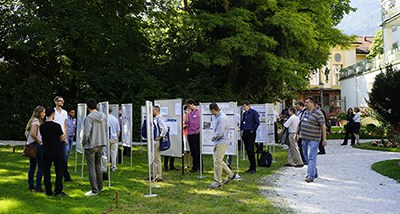Batteries and Fuel Cells: Energy Research with Neutrons
Text: Olaf Holderer, JCNS
16 August 2016
More than 90 energy researchers from around the world participated in the conference “Neutrons for Energy” in Bad Reichenhall from July 18-22 to discuss current findings and relevant issues from various areas of energy research with neutrons. “The full potential of research with neutrons in the study of energy materials has not yet been exhausted”, explained Prof. Dr. Winfried Petry of the Heinz Maier-Leibnitz Zentrum (MLZ), which hosted and organized the conference.

Neutron scattering and imaging with neutrons are particular useful for examining the lighter elements such as hydrogen and lithium and thus explaining the operation of batteries and fuel cells on the atomic level. In solar cells and thermoelectric and magnetocaloric materials, the structure of materials and interface properties play a major role. These properties can be analyzed very accurately using neutron reflectometry and diffraction. In technical applications, for example, in residual stress analysis or the optimization of materials for use in extreme conditions such as in high-temperature materials for gas turbines, many new insights could be obtained with neutron diffraction, small angle scattering and imaging methods. Likewise, positron measurements provide valuable information when characterizing near-surface properties of materials.
Prof. Dr. Thomas Brückel, director at the Jülich Centre for Neutron Science (JCNS) and at the MLZ was pleased with the talks at the conference, which numbered almost seventy. “We encourage energy researchers to find new ways to exploit the potential of neutron scattering.”
In addition to lively discussions against the backdrop of impressive mountain scenery, scientists and company representatives were able to learn more about the long history of mining in the region on an excursion to the nearby salt mine.
More:
